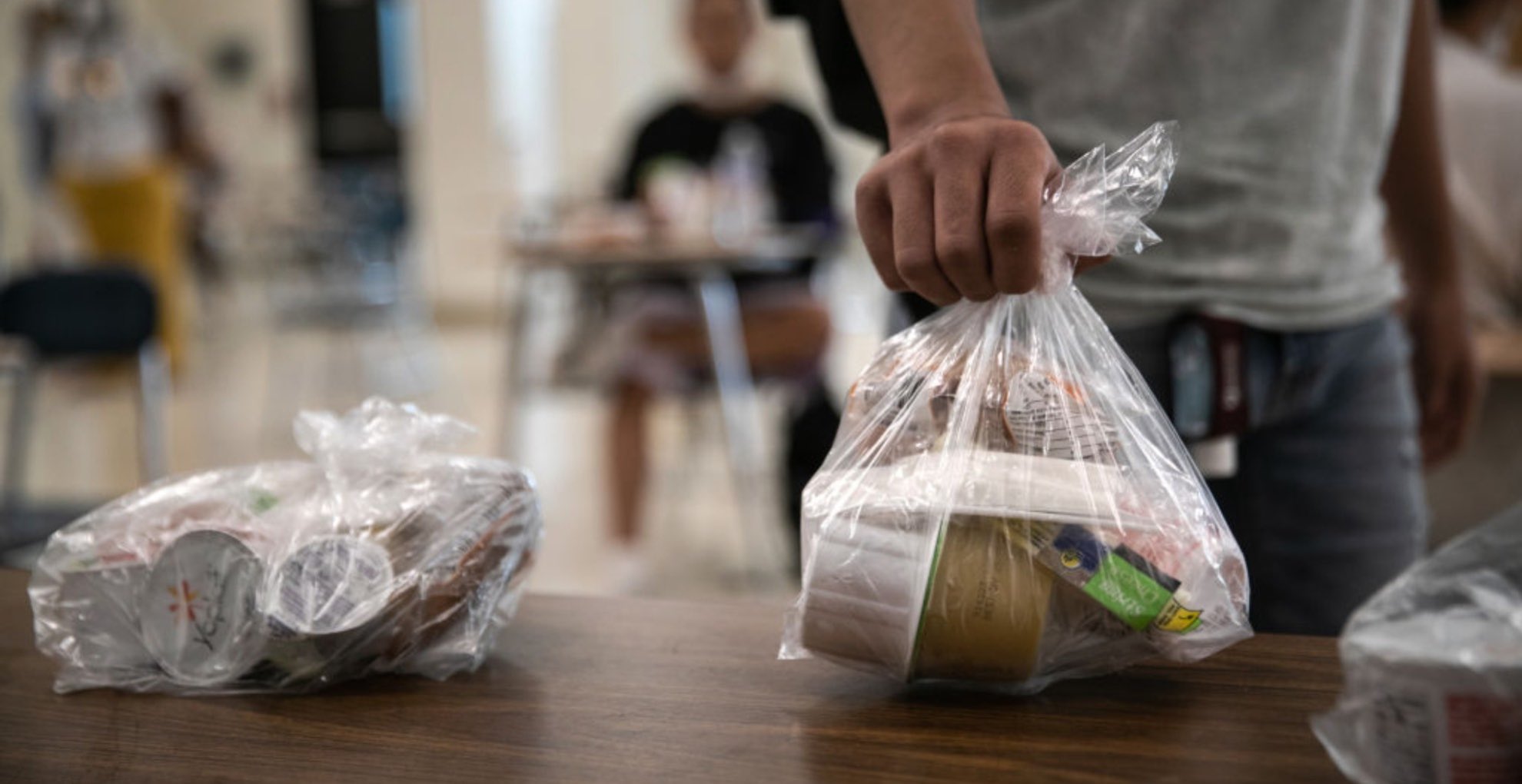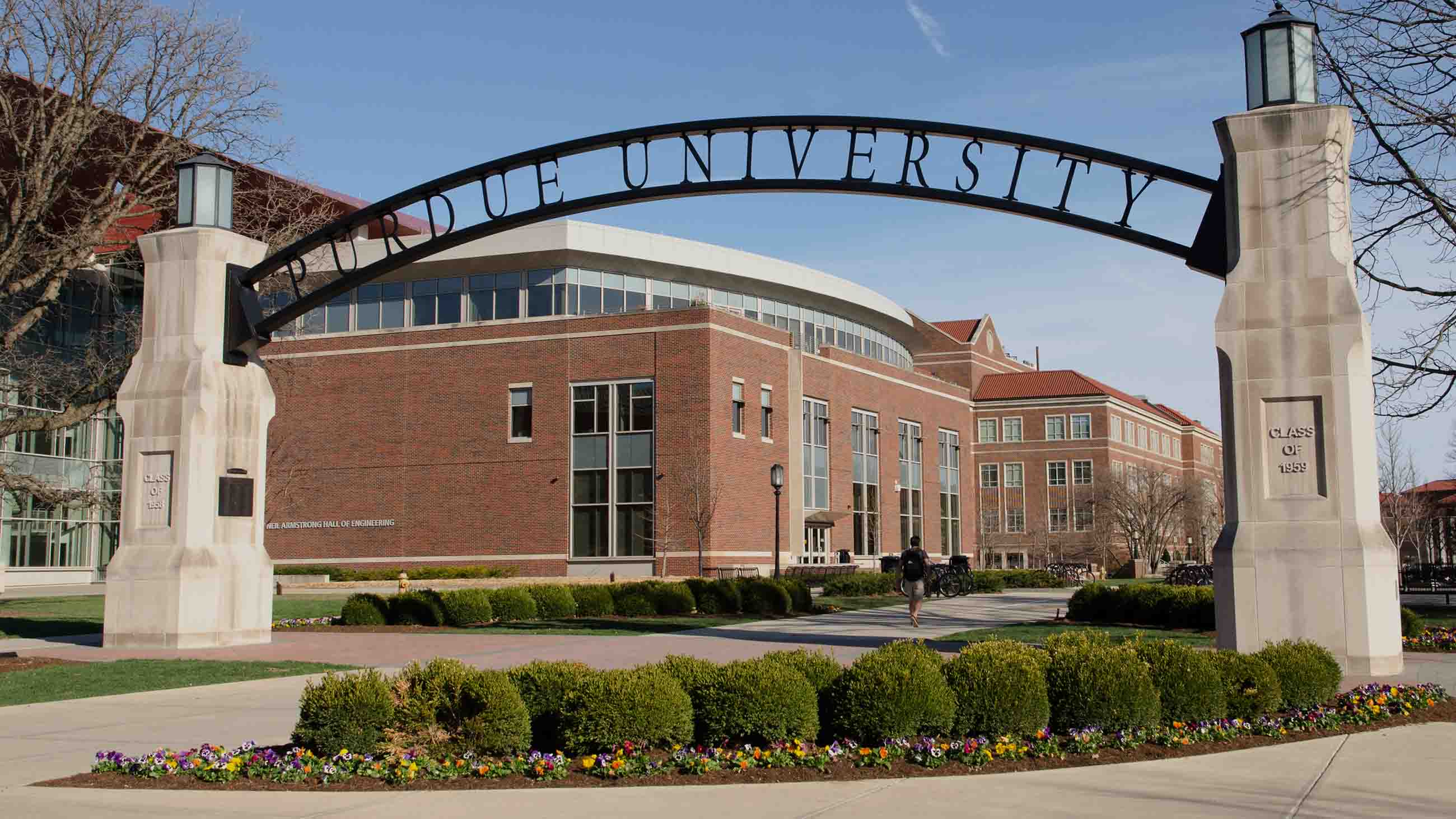Across the country, kids are returning to classes, and families are getting ready to navigate another school year of the new pandemic normal. Those families though may not be ready for the return of the pre-pandemic school lunch system.
Prior to Covid-19, children whose families lived near or below the poverty line were eligible for either free or reduced-price lunch. But in March of 2020, amid widespread concerns about food insecurity, Congress authorized the U.S. Department of Agriculture to provide food assistance to children regardless of financial status. This policy allowed all students to have access to healthy, free food.
Unfortunately, these waivers are coming to an end. The Keep Kids Fed Act, a bipartisan bill that President Biden signed in June, extended some pandemic-era protections, but it does not guarantee free meals for every child in the 2022-2023 school year. The legislation only ensured universal free meals through the end of the summer.
While children from low-income families will still be eligible for free or reduced-price lunch, evidence suggests that, in the absence of universal access, some kids in need will likely miss out on nutritious meals — harming their health, their growth, and their ability to learn.
Rather than re-institute red tape and risk kids falling through the cracks, the U.S. should extend universal school meals indefinitely. Childhood is a critical time for development, and every child deserves to be fed.
The problem is stark: In 2015, 6.5 million households with children were food insecure at some point in the year, meaning that families faced “limited or uncertain access to adequate food,” according to the USDA. Food insecurity is widely correlated with poor health and wellness outcomes. Nutrition, meanwhile, is crucial for students’ learning.
In a 2019 literature review, researchers from the University of Virginia highlighted the importance of nutrition on academic performance and cognitive ability. The brain needs fuel to function properly, and research continues to show that blood glucose levels can directly affect a human’s ability to learn and process information. Deficiencies in certain nutrients, such as iron, can also negatively affect memory and learning. A student who is hungry may simply not have the energy to engage in school the same way a fed child would.
Child nutrition programs have been shown to get kids the nutrients they need. Free and reduced-price meals reduced the prevalence of food insecurity by 3.8 percent and poor general health by 29 percent, according to one 2011 study. And according to the USDA, low-income children who participate in such programs have a healthier diet, and school meals increase access to fruits and vegetables.
While the universal free school meal program has not been in place in the U.S. long enough to be studied extensively, a 2021 review found that such programs were positively associated with improved academic performance as well as attendance.
When you look at the evidence, it seems crystal clear that food for children can make a huge difference for students and their families. How then are meals not yet universal?
Like many social service programs, the universal school lunch program has received pushback. Republican legislators have opposed the extension and leveraged the program as a bargaining chip. People have questioned the quality of free meals and criticized the cost. But as a researcher of public health and nutrition, I know the severe impacts malnutrition can have on the body and human development. It is frustrating to watch as the U.S. government allows these critical waivers to run out. Providing access to food for anyone — especially children — should never be up for debate.
To be clear, the disappearance of these waivers does not mean the disappearance of all federally subsidized school meals. The National School Lunch Program, or NSLP, focuses on providing free or reduced lunch in both private and public schools, while the School Breakfast Program provides reimbursements to states to operate breakfast programs. The benefits of these programs should not be discounted; as of the fiscal year of 2020, they provided students with 3.2 billion meals, with 77 percent at a free or reduced price. However, doing away with a universal program — in which every child is fed regardless of financial status or home situation — takes away a safety net, and instead puts up barriers.
Signing up for such programs requires time and effort that may not always be available for overworked and overwhelmed families. Meanwhile, a need-based initiative that identifies children based on financial status of their households is fuel for potential stigma.
A 2011 study published in the American Journal of Public Health suggested that this stigma may prevent children from eating. After researchers introduced a pilot intervention in which meal offerings at schools were integrated and separate lunch lines were eliminated, students who qualified for a free or reduced lunch through the NSLP were more likely to eat their provided meal. At one high school, participation increased by as much as 154 percent. Another study published in 2013 found similar results.
With the rise of inflation, more and more families may find themselves in dire financial situations. And though many low-income homes may qualify for assistance, others fall into the no-man’s land of not quite qualifying for assistance, but not having enough to provide for their children. For example, if a two-parent household makes a combined $850 a week — only slightly above the eligibility threshold — their one child would not qualify for free or reduced-price lunches, even though they would likely struggle to pay bills in most major U.S. cities. Those cut-offs, too, do not account for potential emergencies, sudden loss of income, or the quality of meals being provided by the household. According to a recent study published in the Journal of the American Medical Association, schools were found to have the highest nutritional quality of meals out of U.S. food sources, no doubt aided by the Healthy, Hunger Free Kids Act of 2010.
Schools are vital institutions that not only provide education to students, but also sustenance. With universal school meals coming to an end, we must decide what is more important: feeding vulnerable youth or reinstating bureaucratic standards? Congress has appeared to opt for the latter. Back in May of 2021, Democratic legislators, including Sen. Bernie Sanders, sought to make free meals a permanent fixture. But the proposed Universal School Meals Program Act is stalled in Congressional committees, seemingly pushed aside in favor of the Keep Kids Fed Act.
It is not too late for Congress to do the right thing. Legislators must make universal school lunches a reality and ensure every kid gets the proper nutrition they need. It is not only important for our children today, but the future of the nation.
For more information on registering for school meal assistance, find information from the USDA here. To find food waiver information by state, please find more information here.
Lauren Bell is an adjunct professor at Tulane University, where she received her M.P.H. in Nutrition. Her research focuses on nutritional disparities.












Comments are automatically closed one year after article publication. Archived comments are below.
I hope that the photo isn’t representative of most lunch programs. It’s as if the goal was to cram as much packaging as humanly possible into yet more packaging. Oh, that’s right. Convenience and keeping the masses happy is more important than what ends up in our air, rivers, lakes, and oceans. I recognize the long-term value to childhood nutrition. But that doesn’t have to be mutually exclusive with being environmentally responsible. It’s not as hard as people think it is.
When was it the Government/Education Dept’s responsibility to feed kids? What happened to people being responsible for their “own” choices. Yeah I know I sound heartless. I am far from liberal. My single mother was poor…but PB&J, even though not nutritious, is very easily to come by, which is why she never gave in to food stamps, free lunches etc. This whole “handouts” “freebie giveaway” is ruining our country. Have some pride, get a job and support your own offspring. Oh, and by the way…nothing is ever “free”. Working people have to pay for it!
School provided lunches are almost universally high carb, highly processed meals that have a long shelf life and can be supplied from centralized corporations. This is bad for the health of kids and bad for our economy and schools, which used to send kids walking hoe for lunch or at least cook nutritious hot meals in house. Track the increase in school lunches with the obesity rate of children, adults, and the lowering life expectancy. Stop giving kids boxed junk, just give cash to poor families and let them feed their own kids.